 January 21, 2021 John E. Ross, KD8IDJ, Editor
| ||||||
Orlando HamCation Announces QSO Party, Special Edition Virtual Presentations Orlando HamCation has announced it will sponsor the HamCation QSO Party over the February 13 - 14 weekend (UTC), "to create a fun way for amateurs to celebrate the Orlando HamCation experience over the air." The HamCation QSO Party will be a 12-hour event on "The QSO party will replicate the camaraderie and social experience of attending HamCation and provide a way to have fun on the radio, since HamCation 2021 will not be held due to COVID-19," the HamCation QSO Party Committee said. The HamCation QSO Party will run from 1500 UTC on February 13 until 0300 UTC on February 14. It will be a CW and SSB operating event on 80, 40, 20, 15, and 10 meters. Any station may work any other station. Categories will be High Power (more than 100 W output), Low Power (100 W output or less, but greater than 5 W), and QRP (5 W output or less). All participants will be single operators; there is no multioperator category. The exchange will be your name and state/province/country, and the outside temperature at your location. "We are including temperature at your QTH as a way of highlighting Orlando's mild February weather," the committee said. Nine HamCation special event stations with 1 × 1 call signs will be on the air with combined suffixes spelling out HamCation (e.g., K4H, W4A, K4M, etc). Each contact will count as one point, and stations may be worked once on each band and mode. Entrants will report their scores on www.3830Scores.com; no logs are required. Final results will be based on the information submitted to the website. Station guest operators must use their own call signs and submit their scores individually. Plaques and certificates will be awarded. Virtual HamCation Set The Orlando HamCation Special Edition online event over the February 13 - 14 weekend will take the place of what would have been the HamCation 2021 in-person show. The online event will include youth, technology, contesting, and vendor webinar tracks. ARRL will also present two webinars on Saturday, February 13. They are:
Live, online prize drawings are also scheduled during the HamCation Special Edition online event. Eastern Iowans Rely On Ham Radio When Severe Weather Strikes A derecho with winds of 80 to 100 MPH struck eastern Iowa last August, disrupting power and telecommunications for some 400,000 residents. But, as ARRL member and Amateur Radio Emergency Haney, the president of the Cedar Valley Amateur Radio Club (CVARC), was the focus of the January 19 feature, "2nd-largest per-capita group of amateur radio operators in the world calls Eastern Iowa home," by Molly Rossiter. "For some people, [amateur radio is] merely a hobby, but for a lot of us, it's much more than that," Haney said. "Ham radio operators are involved in emergency management, in large event management, in a large variety of things. A lot of times people don't know we're there, but we're actually a large part of planning and carrying out many events and gatherings," he said. "People don't realize, especially in weather events like hurricanes, [that] amateur radio is a huge part of getting people in and out of dangerous areas. We've been doing that for decades." As the article notes, the fact that Collins Aerospace (formerly Collins Radio and Rockwell Collins) calls Cedar Rapids home is believed to be the reason that the second-highest population density of hams in the world reside in Eastern Iowa. Haney retired in 2019, after 30 years with Rockwell Collins and Collins Aerospace. He's been licensed for more than 40 years. ARRL Podcasts Schedule
The On the Air and Eclectic Tech podcasts are sponsored by Icom. Both podcasts are available on iTunes (iOS) and Stitcher (Android), as well as on Blubrry -- On the Air | Eclectic Tech. HamSCI Issues Call for Abstracts for March Virtual Workshop HamSCI has issued a call for abstracts for its virtual workshop March 19 - 20, hosted by the University of Scranton and sponsored by the National Science Foundation. "The primary objective of the HamSCI workshop is to bring together the amateur radio community and professional scientists," said HamSCI founder Nathaniel Frissell, W2NAF. The theme is midlatitude Invited tutorial speakers will be Mike Ruohoniemi of the Virginia Tech SuperDARN initiative and Joe Dzekevich, K1YOW. Elizabeth Bruton, of the Science Museum in London, will be the keynote speaker. Submit abstracts by February 15. The March conference will also serve as a team meeting for the Personal Space Weather Station project. Frissell said he will coordinate with respective teams for their abstracts. The HamSCI workshop welcomes abstracts related to development of the Personal Weather Station, ionospheric science, atmospheric science, radio science, spaceweather, radio astronomy, and any science topic "that can be appropriately related to the amateur radio hobby." Submissions related to the workshop theme of midlatitude ionospheric physics are encouraged. Abstracts will be reviewed by the Science/Program Committee, and authors will be notified no later than March 1. Virtual poster presentations are welcome, but due to time constraints, requests for oral presentation slots may not be guaranteed. Contest University to Host Propagation Summit on January 23 Contest University (CTU) is holding a Virtual Propagation Summit on Saturday, January 23. The Zoom-platform event will get under way at 1600 UTC with introductory remarks from Tim Duffy, K3LR, and Ray Novak, N9JA.
A drawing for an Icom IC-705 transceiver will be held. The winner must be present on Zoom in order to win. Visit the 2021 Propagation Summit registration page to sign up. Additional information will be posted on the CTU website. -- Thanks to CTU Chair Tim Duffy, K3LR ARRL Learning Network Webinars Visit the ARRL Learning Network (a members-only benefit) to register, check on upcoming webinars, and to view previously recorded sessions. The schedule is subject to change. Emergency Communications: Why Train? -- North Texas Section Emergency Coordinator Greg Evans, K5GTX Utilizing amateur radio operators in an Thursday, January 21, 2021, 12:30 PM PST / 3:30 PM EST (2030 UTC) Easy Helical Copper Tape and PVC 2-Meter Vertical Antenna -- John Portune, W6NBC Learn how to quickly build a tiny, 18-inch continuously loaded lightweight portable or base station 2-meter omnidirectional vertical with performance and efficiency comparable to a 5-foot J-pole. All you need is copper tape and PVC pipe from the hardware store, and the cost is roughly $10. It's an easy afternoon's homebrew project, ideal for the new ham but equal to the experienced ham's needs. It is great for events like bike-a-thons. It also makes an excellent ham radio club hands-on building project, and the design is adaptable to other bands. Tuesday, February 2, 2021, 10 AM PST / 1 PM EST (1800 UTC) Interesting Stories about Ham Radio & Weather Spotting -- Rob Macedo, KD1CY One of the most critical ways amateur radio supports agencies such as the National Weather Service (NWS), National Hurricane Center, and emergency management is through weather spotting via the NWS SKYWARN program. This presentation reviews some interesting stories about how amateurs involved in SKYWARN have saved lives and property and why this is an important amateur radio activity. Thursday February 11, 2021 5 PM PST / 8 PM EST (0100 UTC on Friday, February 12) Radio Amateur is Co-Leader of Just-Published Blood Plasma Research Study Scott Wright, K0MD -- a well-known amateur radio contester and past editor of the National Contest Journal (NCJ) -- was a co-principal investigator of a research project into the use of convalescent plasma to treat COVID-19 patients. The study, Convalescent Plasma Antibody Levels and the Risk of Death from COVID-19, appeared in the January 13 edition of the prestigious New England Journal of Medicine (NEJM). The study began early last April under the co-leadership of Wright and Dr. Michael Joyner, MD, both of the Mayo Clinic; Dr. Peter Marks, MD, PhD, Dr. Nicole Verdun, MD, of the US Food and Drug Administration, "We report a 6.3% absolute reduction in mortality for those who received high-titer convalescent plasma, and a 36% relative risk reduction in mortality for those who received it while not on a ventilator," Wright summarized briefly. "We are hopeful it will have an impact globally where more advanced -- and expensive -- therapies may not be available." The US Convalescent Plasma Expanded Access Program was a collaborative project between the US government and the Mayo Clinic to provide access to convalescent plasma for patients in the US who were hospitalized with COVID-19. The government-supported study collected and provided blood plasma recovered from COVID-19 patients containing antibodies that, it was theorized, could help these individuals fight the disease. Wright said that in contrast with most studies, the investigators designed and carried out the research without help from National Institutes of Health (NIH). "It was an enormous project, not to mention that over 105,000 people enrolled in the study," Wright said. "The NEJM paper is a subset analysis of 3,000 or so subjects. We did a lot of innovative things with the FDA's permission to make this a study that quickly enrolled patients, physicians, and hospitals." Wright said the study participants cooperated with all but five hospital systems in the US and had sites in all US territories overseas and military facilities. "Our physicians locally at the sites enrolled twice as many minority subjects as any randomized clinical trial ever," Wright said, and we had about half men and half women as subjects -- something most trials struggle with." The study has attracted some media attention. Wright was interviewed by NBC News. "We were happy to have some media interest, especially given the other news in Washington, DC, that overshadows this naturally," he said. "It is just a great feeling to have it published and peer reviewed." Announcements: January 21
Amateur Radio in the News ARRL Public Information Officers, Coordinators, and many other member-volunteers help keep amateur radio and ARRL in the news. Share any amateur radio media hits you spot with us. 2nd-largest per-capita group of amateur radio operators in the world call Eastern Iowa home The Gazette, January 19, 2021 Irish Students Get to Chat with International Space Station Euro Weekly News (online), December 9, 2020 Ham Radio Operators Honor Legacy of Mars Hill Company The Citizen-Times (North Carolina), December 9, 2020 WDRB.com (Kentucky), December 5, 2020 Liftoff: Sea Road School Students to Chat with Space Station Astronaut Kennebunk Post (Maine), December 4, 2020 The K7RA Solar Update Tad Cook, K7RA, Seattle, reports: We just witnessed 12 consecutive days with no sunspots, which many of us found a bit unsettling. But fortunately Solar Cycle 25 activity returned with a new sunspot on January 15.
Average daily solar flux rose from 73.8 to 76.1, and geomagnetic indicators sank to very quiet levels. Average daily planetary A index dropped from 5.9 to 4, and average daily middle latitude A index from 4.4 to 3. The outlook for the next month looks good. Predicted daily solar flux for the next 30 days is 80 on January 21 - 28; 75 on January 29 - February 3; 76 for February 4 - 10; 77 for February 11 -17, and 76 on February 18 - 19. Predicted planetary A index is 14, 10, and 8 on January 21 - 23; 5 on January 24 - 25; 8 on January 26 - 28; 5 on January 29 - 31; 10 on February 1 - 2; 5 on February 3 - 13; 10, 10, 12, and 10 on February 14 - 17, and 5 on February 18 - 19. Sunspot numbers for January 14 - 20 were 0, 13, 15, 23, 13, 14, and 25, with a mean of 14.7. The 10.7-centimeter flux was 73.6, 73.4, 77.7, 77.2, 75.3, 78.1, and 77.2, with a mean of 76.1. Estimated planetary A indices were 2, 3, 4, 3, 4, 6, and 6, with a mean of 4. Middle latitude A index was 1, 2, 2, 2, 3, 6, and 5, with a mean of 3. A comprehensive K7RA Solar Update is posted Fridays on the ARRL website. For more information concerning radio propagation, visit the ARRL Technical Information Service, read "What the Numbers Mean...," and check out K9LA's Propagation Page. A propagation bulletin archive is available. For customizable propagation charts, visit the VOACAP Online for Ham Radio website. Share your reports and observations. In Brief...
Just Ahead in Radiosport
Upcoming ARRL Section, State, and Division Conventions Many conventions and hamfests have been canceled or postponed due to the coronavirus pandemic. Check the calendar of canceled events on the ARRL website.
Find conventions and hamfests in your area.
ARRL -- Your One-Stop Resource for . .
Subscribe to...
Free of charge to ARRL members...
| ||||||
.jpg) HamCation weekend. HamCation 2021 was to host the ARRL National Convention, which now will take place in 2022.
HamCation weekend. HamCation 2021 was to host the ARRL National Convention, which now will take place in 2022..jpg) Service (ARES®) volunteer Scott Haney, N0GUD, recently explained to The Gazette in Cedar Rapids, that's when amateur radio shines.
Service (ARES®) volunteer Scott Haney, N0GUD, recently explained to The Gazette in Cedar Rapids, that's when amateur radio shines.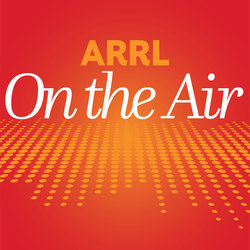 The latest episode of the On the Air podcast (Episode 13) features a discussion with Curt Laumann, K7ZOO, about his success in boosting activity at the University of Arizona amateur radio club.
The latest episode of the On the Air podcast (Episode 13) features a discussion with Curt Laumann, K7ZOO, about his success in boosting activity at the University of Arizona amateur radio club. The latest edition of Eclectic Tech (Episode 25) will discuss extreme magnetic fields and also feature a chat with Bob Allison, WB1GCM, on the topic of hunting down and resolving interference.
The latest edition of Eclectic Tech (Episode 25) will discuss extreme magnetic fields and also feature a chat with Bob Allison, WB1GCM, on the topic of hunting down and resolving interference.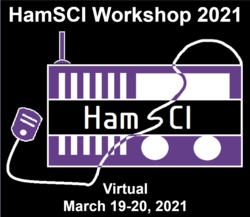 ionospheric physics, "which is especially important to us because the vast majority of hams live in the midlatitude regions," Frissell said.
ionospheric physics, "which is especially important to us because the vast majority of hams live in the midlatitude regions," Frissell said. emergency communication situation is a key function that can save lives. We must be able to respond to the needs of our served agencies quickly and responsibly. Topics covered include the Incident Command System and its relevance; building on consistent training; interoperability with multiple communication providers; interoperability with VOAD and partners, and mission one: get the information delivered.
emergency communication situation is a key function that can save lives. We must be able to respond to the needs of our served agencies quickly and responsibly. Topics covered include the Incident Command System and its relevance; building on consistent training; interoperability with multiple communication providers; interoperability with VOAD and partners, and mission one: get the information delivered.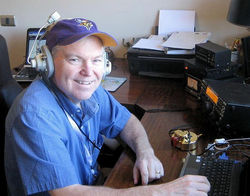 and Dr. Arturo Casadevall, MD, PhD, of Johns Hopkins University. Dr. Marks is AB3XC. The Mayo Clinic was the lead institution for the program. Initially heading up one segment of the study, the Mayo Clinic asked him to formally step in as co-principal investigator and to assume the forward face with the media.
and Dr. Arturo Casadevall, MD, PhD, of Johns Hopkins University. Dr. Marks is AB3XC. The Mayo Clinic was the lead institution for the program. Initially heading up one segment of the study, the Mayo Clinic asked him to formally step in as co-principal investigator and to assume the forward face with the media.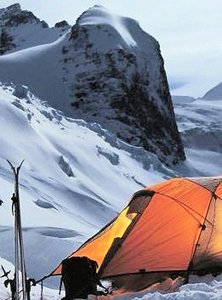 Winter Field Day
Winter Field Day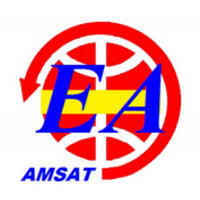 February, June, and October; OC200R in March, July, and November, and OC200U in April, August, and December. QSL to OA4O.
February, June, and October; OC200R in March, July, and November, and OC200U in April, August, and December. QSL to OA4O.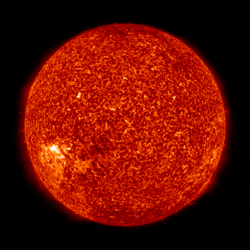 Average daily sunspot numbers increased from zero last week to 14.7 in the January 14 - 20 reporting period.
Average daily sunspot numbers increased from zero last week to 14.7 in the January 14 - 20 reporting period.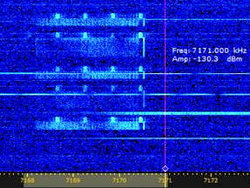 Over-the-horizon radars (OTH-R) continue to clutter 40 and 20 meters. The International Amateur Radio Union Region 1 Monitoring Service (
Over-the-horizon radars (OTH-R) continue to clutter 40 and 20 meters. The International Amateur Radio Union Region 1 Monitoring Service (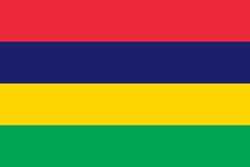 The Indian Ocean island nation of Mauritius plans to launch MIR-SAT1 (Mauritius Imagery and Radio - Satellite 1) in 2021. The project was the first winner of the 2018 round of the United Nations Office for Outer Space Affairs (UNOOSA) and Japan Aerospace Exploration Agency (JAXA) KiboCUBE Program. The CubeSat will carry an amateur radio V/U digipeater (a downlink of 436.925 MHz has been coordinated). It's expected that JAXA will launch MIR-SAT1 to the International Space Station (ISS) in February for deployment in May or June, according to
The Indian Ocean island nation of Mauritius plans to launch MIR-SAT1 (Mauritius Imagery and Radio - Satellite 1) in 2021. The project was the first winner of the 2018 round of the United Nations Office for Outer Space Affairs (UNOOSA) and Japan Aerospace Exploration Agency (JAXA) KiboCUBE Program. The CubeSat will carry an amateur radio V/U digipeater (a downlink of 436.925 MHz has been coordinated). It's expected that JAXA will launch MIR-SAT1 to the International Space Station (ISS) in February for deployment in May or June, according to .JPG) Two new member-societies have been proposed for IARU membership. The Amateur Radio Union of the Kyrgyz Republic (
Two new member-societies have been proposed for IARU membership. The Amateur Radio Union of the Kyrgyz Republic (.jpg)








